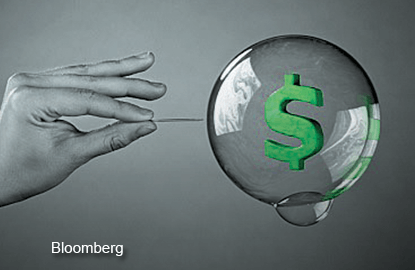
WATCHING an asset bubble burst is a little like watching a tornado: You know lives are being destroyed, yet nature’s awesome power has a strange, terrifying beauty.
The bust we’re seeing now is in China, where a spectacular year-long stock-market boom has turned into a rout. After soaring about 100% since late 2014, the Shanghai Composite Index has now lost about a third of its peak value in a few days.
The Chinese government is pulling out all the stops to prop up the markets, no doubt to preserve the illusion that it controls the economy. Perhaps not coincidentally, its interventions also allow party cadres and the well-connected to cash out without taking a big loss.
But why did investors believe the Chinese stock market was headed for the stratosphere, even as some folks on the sidelines saw all the classic symptoms of a bubble? Economists have been struggling with this question for years. Though there are no definitive answers, there are a few leading theories.
The first big idea is that bubbles are pumped up by speculation. Speculation happens when investors buy assets for more than they think the assets are worth because they believe that they’ll be able to sell at an even higher price.
Imagine if you bought General Motors stock for US$25 (RM94.75), even though you believed it would only be worth US$20 in the long term because you expected that someone else would come along and take it off your hands for US$30 in the short term. That’s speculation. It also goes by the name of “greater fool theory.”
Economists realised long ago that if all investors were rational, it would be difficult for speculation to exist. So to get speculation, you typically need for the rational investors to be beset by herds of irrational investors. These are called “noise traders,” but you can think of them as a zombie horde, screaming, “Buy, buy, buy!” or “Sell, sell, sell!”
Sometimes, as in a zombie movie, it makes sense to stand and fight the zombies, but if you’re faced with a big enough horde, it makes sense to turn and run. In the same way, economists have shown how irrational “noise traders” can overwhelm rational traders, forcing rational people to buy into the bubble instead of trading against it. Since a large portion of Chinese stocks are held by individual investors, it seems possible that irrationality has gripped that market.
A second, closely related theory for what causes bubbles is herd behaviour. Imagine if you were sitting in a cafe and suddenly everyone got up and ran for the exits. Would you follow them, or would you try to figure out why everyone was running? Most people would dart. After all, you don’t want to be the last person out the door because you might be eaten by the mountain lion that just walked in.
So herd behaviour can be rational. In asset markets, this means that when stock prices suddenly rise, some people believe they rose for a reason and that others are clued into this reason. More people then pile in, causing the price to rise further and yet more buyers to jump in. In other words, people start running for the door when there is no mountain lion. Chinese people may have bought into the markets simply because everyone else was doing it.
A third theory relies on the way that humans use the past to predict the future. Sometimes people may interpret price movements as “trends” that can be expected to continue. That’s called “extrapolative expectations.” If you’ve ever seen finance journalists draw big coloured arrows on stock charts, you know how easy it is to make this kind of inference.
Another example came in the recent housing bubble, where many models of mortgage-backed bonds assumed that home prices would continue to rise. If some investors think like this, they can temporarily push other investors around, causing bubbly swings in asset prices. Chinese investors may have assumed that rising stocks were a “new normal” that could be expected to continue.
A fourth theory is based on the idea that new investors will keep providing fresh demand. It may be hard to predict when a surge of new demand will end. If different people make different assumptions about the number of new investors, it can cause markets to overshoot and then crash. China has a lot of newly rich people, and many were probably first-time investors fleeing the slow collapse of the country’s housing bubble.
So there are many theories of why bubbles exist, but there’s no consensus yet. A lot of these theories rely on knowing investors’ beliefs, which is difficult (though economists are trying). But there are signs that investors can use to help identify an elevated risk of bubbles.
One is overvaluation of stocks relative to historical price-to-earnings multiples. Another is a regulatory change that allows a sudden surge of new investors into the market. A third is the presence of a story for why “this time is different” — a mental excuse for people to believe that recent price rises will continue forever. These indicators won’t let you time a bubble perfectly, but they are good reasons to be cautious.
As for China — well, if you bought into that bubble, it’s probably too late by now. — Bloomberg View
This article first appeared in The Edge Financial Daily, on July 10, 2015.